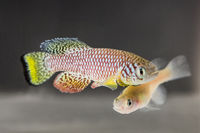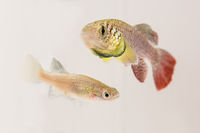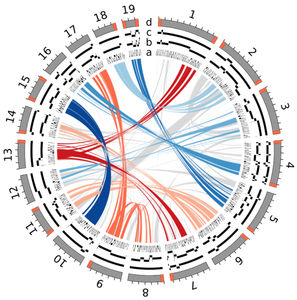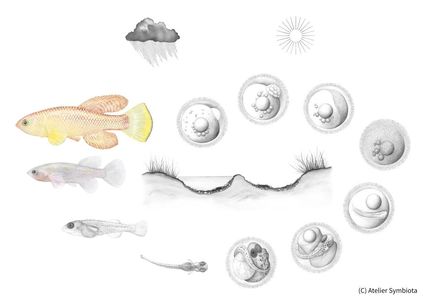Turquoise Killifish (Nothobranchius furzeri)
Exceptional African fish helps to understand aging
The turquoise killifish (Nothobranchius furzeri) lives in seasonally dry ponds in semi-arid areas of southeast Africa, where rainfall is rare and unpredictable. The fish has adapted to this habitat in a variety of ways. For example, its fertilized eggs are encased in a coating that is resistant to desiccation. The fish eggs can also survive prolonged periods of drought by entering so-called diapauses, in which their development is suspended for extended periods of time – several days, months or even a year.
As soon as the dried-out ponds refill with water after a period of rain, the fish hatch, reaching sexual maturity within three to five weeks. During mating, the male wraps his dorsal fin around the female, pushing her to the bottom of the pool and fertilizing the eggs. The female then deposits the eggs in the mud at the bottom, thus ensuring the next generation.
Because the ponds in the distribution area of the turquoise killifish are only filled with water for a very brief period, the natural lifespan of the fish is only a few months. This limited life expectancy does not change even under optimal husbandry conditions in the laboratory. Thanks to its short lifespan, the turquoise killifish is a promising model organism for aging research.
Aging in fast motion: It’s all in the genes ...
During its brief life of only a few months, the turquoise killifish ages like all other vertebrates. The fish, which measures about 6 cm when fully grown, loses its coloration over time, much as human hair turns gray. Its muscle mass reduces, limiting its mobility and activity as it ages. The FLI has been able to show that the fish’s organ functions also decline and its regenerative capacity is reduced. Even disease patterns that typically occur in aging humans can be observed in this model organism: for example, the turquoise killifish develops a hump, suffers from cancer or the or the loss of nerve cells. These aging processes can be traced down to the cellular level. Thus, the turquoise killifish offers researchers the possibility to determine the influence of genetic or environmental factors on the aging process within a uniquely short time span.


The FLI was among the first institutions to completely decode the genome of the fish, providing the genetic and genomic basis to establish Nothobranchius furzeri as a model system in biomedical aging research.

As an aging model, N. furzeri helps with research on:
- organ regeneration in aging
- genes that influence sex and lifespan
- the aging of the brain and nervous system
- the influence of genes or medication on healthy aging
- the effects of the body’s own microorganisms on aging and health.










